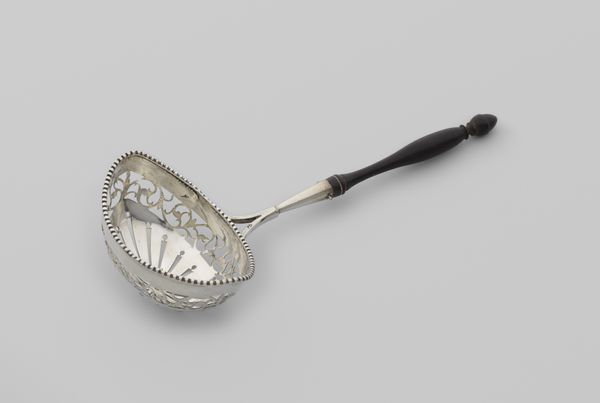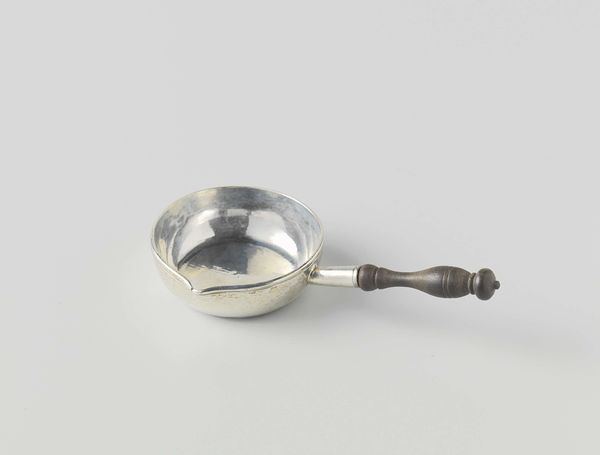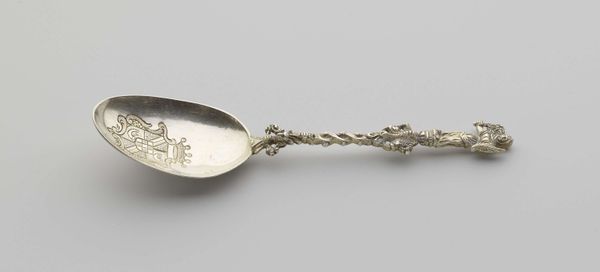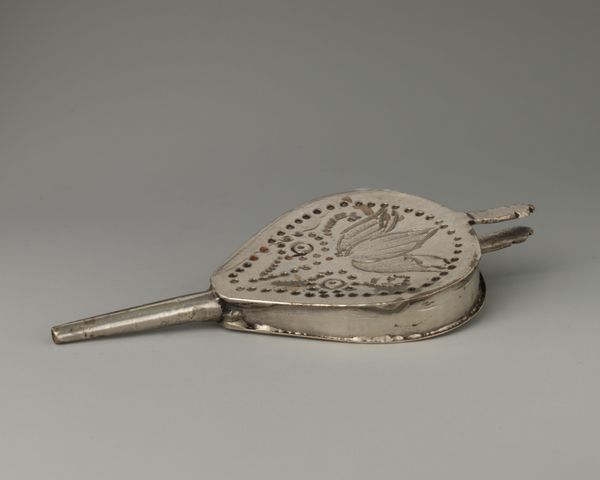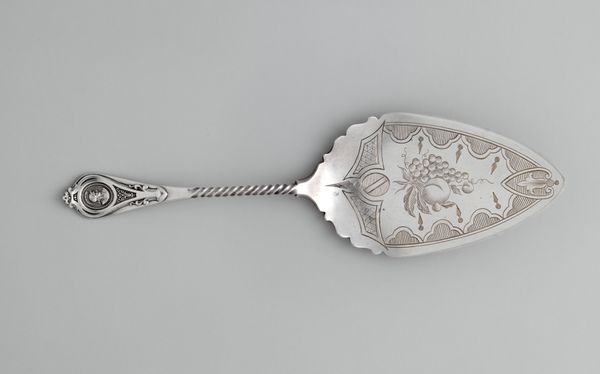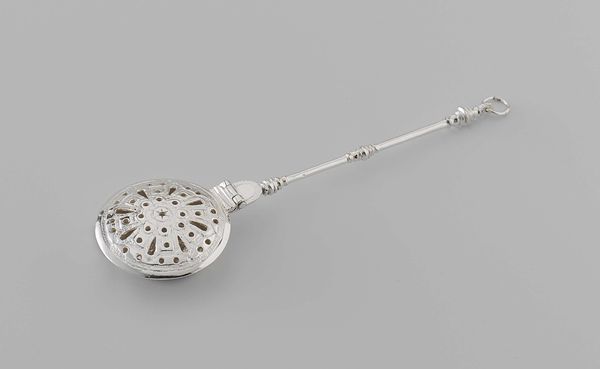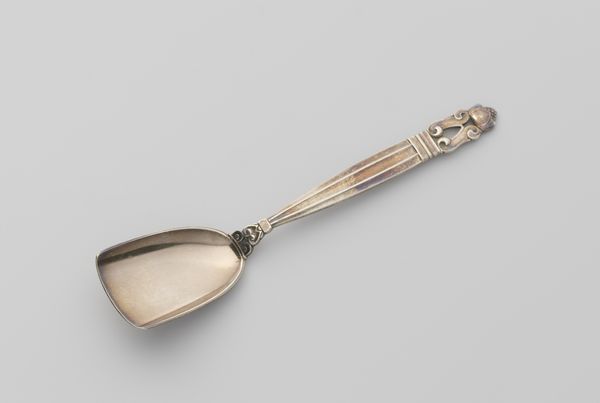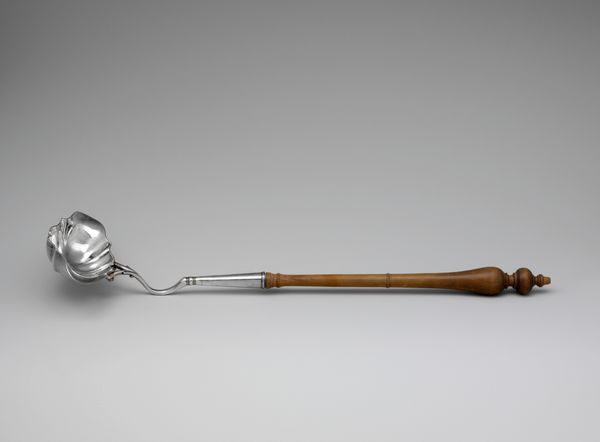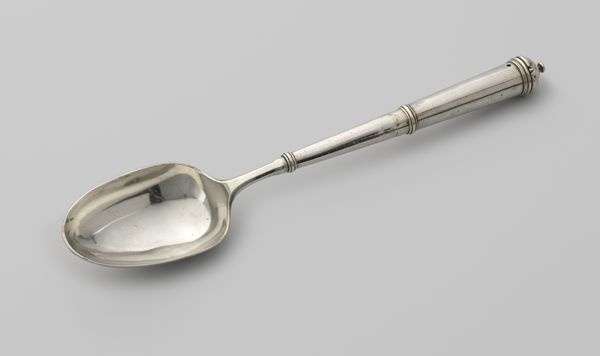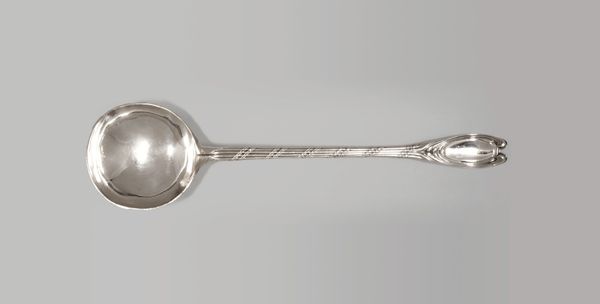
Suikerstrooilepel met ronde opengewerkte bak met gedraaide, gekartelde rand c. 1800
0:00
0:00
Dimensions: length 23.4 cm, width 6.5 cm, depth 4.1 cm, weight 37 gr
Copyright: Rijks Museum: Open Domain
Editor: This is a sugar sifter spoon made around 1800 by Johan Hendrik Schmidt. It's crafted from silver and wood. The opulence and delicate piercing of the bowl is just striking. What aspects of the form do you find most compelling? Curator: Note the contrast. We have a juxtaposition of the reflective silver of the bowl and handle join, with the matte, dark wood comprising the handle itself. The pierced bowl contrasts both with its solid rim and the handle. Do you see a dialogue between these differing sections? Editor: I hadn't really thought of it that way, as a conversation. The pierced bowl, with its round design, creates a sense of lightness, almost airiness. And that juxtaposes against the solid, grounding nature of the dark wooden handle. Is this tension deliberate? Curator: Deliberate is difficult to ascertain across the centuries, but certainly effective. Observe how the twist of the wooden handle is echoed in the twisted rim of the bowl. This mirroring creates visual harmony, resolving the aforementioned contrast. Also note that, while functional, the maker gave particular attention to surface decoration, elevating it beyond a merely utilitarian object. Editor: I see what you mean. It’s not *just* a spoon. I hadn't noticed those echoes of form, or the balance between utility and art. The repetition is very pleasing. Curator: Indeed. It provides visual interest and articulates different parts, a successful composition through varying materials and repeating shapes. Editor: Thank you; thinking about it as a composition really makes a difference.
Comments
No comments
Be the first to comment and join the conversation on the ultimate creative platform.
